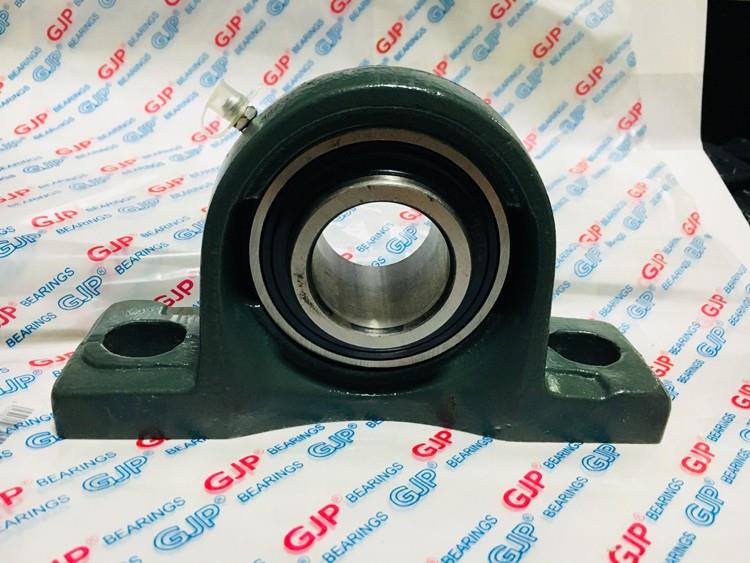Introduction
Slinger Seal Pillow Block Bearing is a type of ball bearing that is primarily used in heavy-duty applications. It consists of a bearing housing and an insert bearing that is designed to fit into the housing. The housing is typically made of cast iron, while the insert bearing is made of high-quality steel. The bearing is a popular choice for many industries because of its durability, efficiency, and long service life.
What is Slinger Seal Pillow Block Bearing?
The Slinger Seal Pillow Block Bearing is a type of bearing that is designed to be mounted on a shaft. It consists of a bearing housing, an insert bearing, and a sealing device. The bearing housing is typically made of cast iron, which is a durable and strong material. The insert bearing is made of high-quality steel and is designed to fit into the housing. The sealing device, also known as the slinger seal, is used to prevent contaminants from entering the bearing and to retain lubrication within the bearing.
Advantages of Slinger Seal Pillow Block Bearing
The bearing has several advantages over other types of bearings. Some of the advantages include:
- Durability: The bearing is designed to be used in heavy-duty applications. It is made of high-quality materials that can withstand the demands of heavy loads and high speeds.
- Efficiency: The Slinger Seal Pillow Block Bearing is designed to operate efficiently. It has low friction, which means that it can run smoothly and with minimal heat buildup.
- Long Service Life: The bearing has a long service life. It is designed to withstand wear and tear, which means that it can be used for many years without the need for replacement.
- Easy Maintenance: The bearing is designed to be easy to maintain. It can be easily disassembled and cleaned, which means that it can be kept in good working condition with minimal effort.
- Cost-Effective: The Slinger Seal Pillow Block Bearing is a cost-effective solution for many industries. It is designed to be durable and long-lasting, which means that it can provide a high return on investment.

Applications of Slinger Seal Pillow Block Bearing
The bearing is used in a variety of applications. Some of the applications include:
- Agriculture: The bearing is used in agricultural equipment such as tractors, harvesters, and cultivators.
- Food and Beverage: The Slinger Seal Pillow Block Bearing is used in food and beverage processing equipment such as conveyors, mixers, and blenders.
- Material Handling: The Slinger Seal Pillow Block Bearing is used in material handling equipment such as conveyor belts, hoists, and cranes.
- Mining and Construction: The bearing is used in mining and construction equipment such as excavators, bulldozers, and loaders.
- Paper and Pulp: The bearing is used in paper and pulp processing equipment such as paper mills and pulp mills.
Installation of Slinger Seal Pillow Block Bearing
The installation of bearing is critical to its performance and longevity. The following are some of the steps that should be followed when installing a Slinger Seal Pillow Block Bearing:
- Select the Right Size: The first step in the installation process is to select the right size of the bearing for the application. The bearing should be selected based on the load, speed, and operating conditions.
- Clean the Shaft and Housing: The next step is to clean the shaft and housing thoroughly. Any debris or contaminants on the shaft or housing can cause damage to the bearing.
- Install the Bearing: The bearing should be carefully inserted into the housing.
- Lubricate the Bearing: The bearing should be lubricated with the appropriate type and amount of lubricant before installation. This will help to reduce friction and wear, and also protect the bearing from corrosion.
- Secure the Housing: The housing should be securely mounted to the equipment using the appropriate mounting hardware. The housing should be aligned properly to ensure that the bearing is not subjected to any unnecessary loads or stresses.
- Install the Sealing Device: The sealing device should be installed properly to prevent contaminants from entering the bearing and to retain lubrication within the bearing. The slinger seal should be installed with the open end facing the direction of rotation.

Maintenance of Slinger Seal Pillow Block Bearing
Proper maintenance is essential for the long-term performance and reliability of the Slinger Seal Pillow Block Bearing. The following are some of the maintenance procedures that should be performed on a regular basis:
- Inspect the Bearing: The bearing should be inspected regularly for signs of wear, damage, or contamination. Any issues should be addressed immediately to prevent further damage.
- Clean the Bearing: The bearing should be cleaned regularly to remove any debris or contaminants that may have entered the bearing. The bearing should be cleaned with a non-corrosive cleaner and dried thoroughly before reassembly.
- Lubricate the Bearing: The bearing should be lubricated regularly with the appropriate type and amount of lubricant. The lubricant should be applied according to the manufacturer’s recommendations.
- Check the Sealing Device: The sealing device should be checked regularly to ensure that it is functioning properly. Any damage or wear to the sealing device should be addressed immediately.
- Replace the Bearing: If the bearing shows signs of excessive wear or damage, it should be replaced immediately to prevent further damage to the equipment.
Conclusion
The Slinger Seal Pillow Block Bearing is a versatile and durable type of bearing that is used in a variety of heavy-duty applications. Its design, construction, and sealing device make it an excellent choice for many industries. The proper installation, maintenance, and replacement of the bearing are critical to its performance and longevity. With proper care and maintenance, the bearing can provide many years of reliable service to the equipment and machinery that it supports.
Related Products

